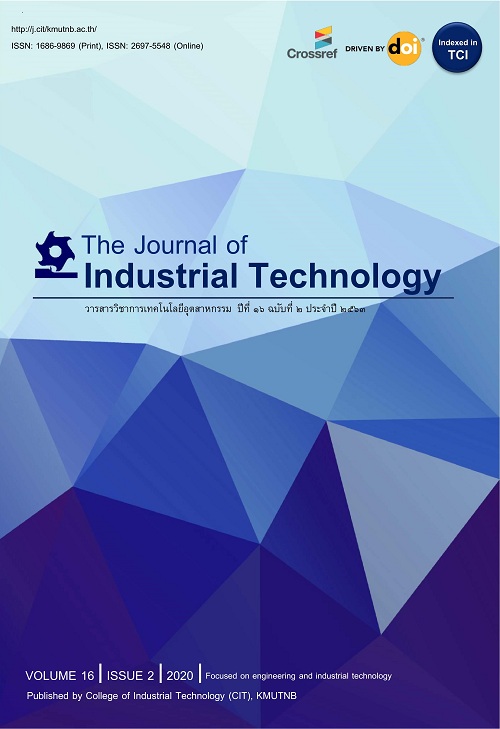การเลือกผังสายการผลิตด้วยวิธีการจำลองสถานการณ์: กรณีศึกษา กระบวนการผลิตในอุตสาหกรรมแปรรูปกระจก
Selection of Production Layout by Simulation Modeling: A case study of a glass processing factory
Abstract
บทคัดย่อ
อุตสาหกรรมแปรรูปกระจกแห่งหนึ่งมีความต้องการปรับเพิ่มกำลังการผลิตและปรับปรุงสายการผลิต ด้วยการติดตั้งเครื่องจักรใหม่และปรับย้ายตำแหน่งห้องประกบ-อัดมือและห้องประกบลายผ้าและวัสดุพิเศษ ขั้นแรกทางทีมวิจัยได้ประยุกต์ใช้เครื่องมือตามหลักการ Plant layout โดยใช้แผนภูมิความสัมพันธ์ในการวิเคราะห์เบื้องต้นและได้ผังใหม่ห้องละ 2 แบบที่ต่างกันตรงตำแหน่งของโต๊ะลบคม โต๊ะประกบ และ ตู้ Climate box ซึ่งส่งผลให้ระยะทางการไหลของวัสดุและการเดินทางของพนักงานต่างกัน ในขั้นสุดท้ายทางทีมวิจัยได้ประยุกต์ใช้การจำลองสถานการณ์โดยพิจารณาปัจจัยเพิ่มเติมด้านความแตกต่างของสัดส่วนผลิตภัณฑ์ เวลาและจำนวนพนักงานที่ใช้ในการผลิต ทั้งนี้มีดัชนีชี้วัดเพิ่มเติมในด้านระยะเวลาการผลิตและจำนวนที่ผลิตได้ โดยพบว่าห้องประกบ-อัดมือควรใช้ผัง M2 เพราะสามารถลดพนักงานได้ 1 คน และผลผลิตเพิ่มขึ้นร้อยละ 18 ส่วนห้องประกบลายผ้าและวัสดุพิเศษควรใช้ผัง F1 เพราะผลิตภัณฑ์ที่ผลิตเสร็จก่อนเข้ากระบวนการอัดเพิ่มขึ้นร้อยละ 35 และมีเวลารอคอยลดลงร้อยละ 29
Abstract
When combining glass, films or decorating materials are placed between two sheets, then compressed with a heat source and air pressure. In our case study of a glass processing plant, machines for the new process of storing film (Climate box) and compression (Hoaf) for its fabric combining room are to be installed for quality improvement and capacity expansion. We identify the best machines location and rearrange the new layout. Two new layouts for each room were developed based on the plant layout principle: using string diagram, relationship chart and dimensionless block diagram. Different locations of the edges-smooth glass processing table, glass-combining table and climate box were proposed. Each layout results in either better material flow or reduced walking distance. A simulation model, with additional key measures, such as daily production, cycle time, and production waiting time, was used to evaluate the layout selection. Product mix variety and the resource usage factors were considered in the model. Simulation and analysis suggest selecting the M2 layout for the manual pressing room since productivity can increase by 18%, while using fewer people. For the fabric combining room, we choose the F1 layout giving 35% higher productivity, with 29% less waiting time.
Keywords
Refbacks
- There are currently no refbacks.






